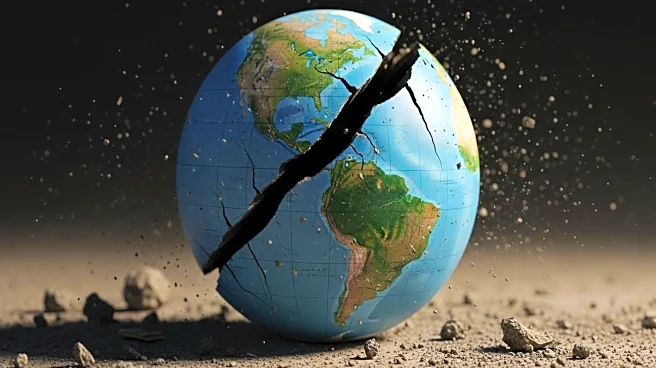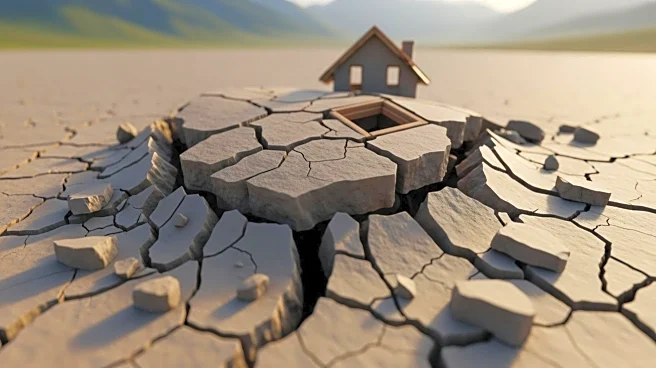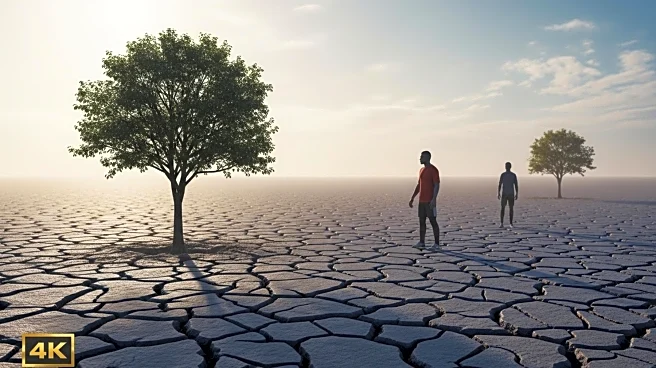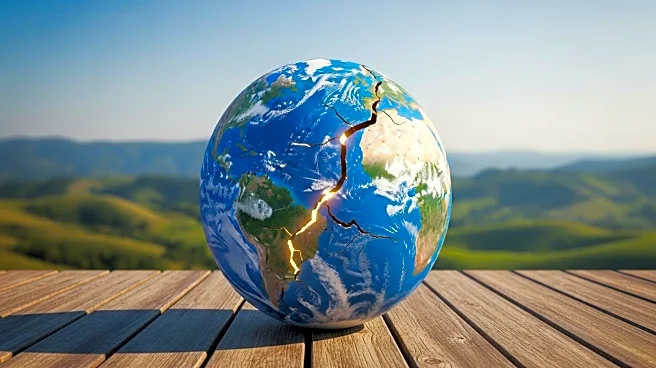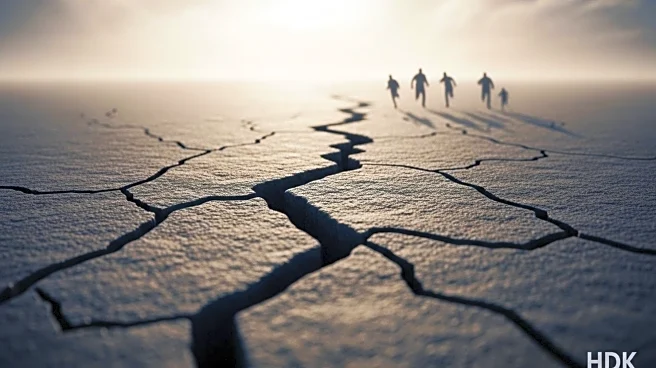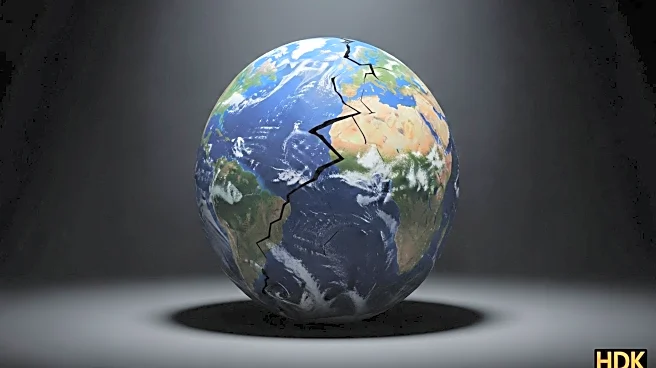What is the story about?
What's Happening?
A magnitude 5.4 earthquake has struck northwestern Turkey, centered in the town of Simav in Kutahya province. The quake occurred at a depth of 8 kilometers and was followed by a magnitude 4.0 aftershock. Despite the tremor being felt in Istanbul, no casualties have been reported. The earthquake prompted residents to flee their homes and gather in public spaces. Turkey is situated on major fault lines, making it prone to frequent seismic activity. The region has experienced several smaller shocks since a magnitude 6.1 earthquake struck in August.
Why It's Important?
Turkey's location on major fault lines makes it highly susceptible to earthquakes, which can have devastating effects on communities and infrastructure. The recent quake serves as a reminder of the ongoing risk faced by the country and the importance of preparedness and resilience. While no casualties were reported, the event underscores the need for effective emergency response systems and public awareness. The historical context of previous earthquakes, such as the 2023 disaster that killed over 53,000 people, highlights the potential for significant loss of life and property.
What's Next?
Authorities will likely continue to monitor seismic activity in the region and assess any damage caused by the earthquake. Efforts to strengthen infrastructure and improve building codes may be prioritized to mitigate future risks. Public education campaigns on earthquake preparedness could be reinforced to ensure communities are better equipped to respond to such events. The government may also review and update emergency response plans to enhance coordination and effectiveness.
Beyond the Headlines
The frequent occurrence of earthquakes in Turkey raises broader questions about urban planning and development in seismic zones. The need for sustainable and resilient infrastructure is critical to reducing vulnerability and enhancing safety. The event also highlights the importance of international cooperation in sharing best practices and technologies for earthquake preparedness and response.
AI Generated Content
Do you find this article useful?
